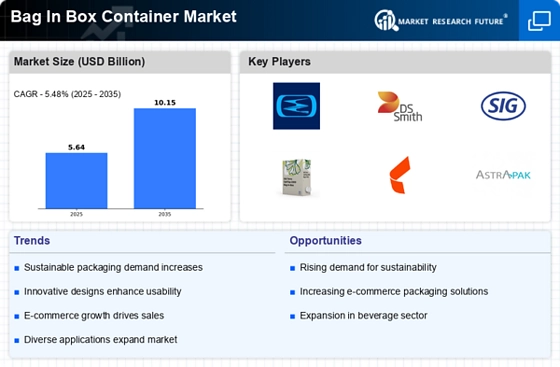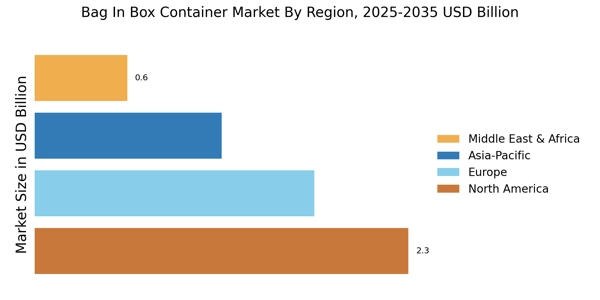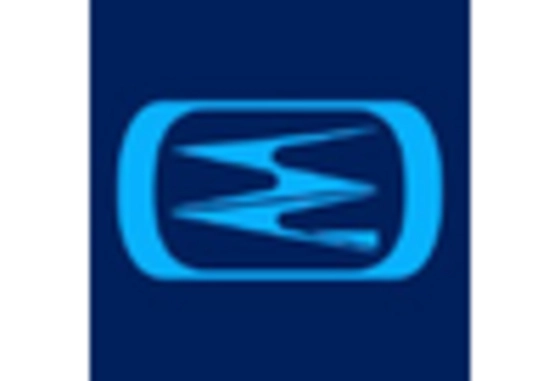Cost-Effectiveness
Cost-effectiveness is a significant driver in the Bag In Box Container Market. These containers offer a more economical alternative to traditional packaging methods, particularly for bulk products. The lightweight nature of bag in box containers reduces shipping costs, while their efficient design minimizes storage space requirements. In 2023, the cost savings associated with using bag in box solutions were estimated to be around 20% compared to conventional packaging. This financial advantage is particularly appealing to manufacturers looking to optimize their supply chains and reduce operational costs. As businesses continue to seek ways to enhance profitability, the Bag In Box Container Market is likely to benefit from this trend.
Sustainability Initiatives
The Bag In Box Container Market is increasingly influenced by sustainability initiatives. As consumers become more environmentally conscious, companies are compelled to adopt eco-friendly packaging solutions. Bag in box containers, often made from recyclable materials, align with this trend by reducing waste and promoting responsible consumption. The industry has seen a notable shift, with a reported increase in demand for sustainable packaging options. In 2023, the market for sustainable packaging was valued at approximately 400 billion USD, indicating a growing preference for environmentally friendly products. This trend is likely to continue, as businesses strive to meet regulatory requirements and consumer expectations, thereby driving growth in the Bag In Box Container Market.
Technological Advancements
Technological advancements play a pivotal role in shaping the Bag In Box Container Market. Innovations in materials and manufacturing processes have led to the development of more durable and efficient packaging solutions. For instance, advancements in barrier technology enhance the preservation of contents, making bag in box containers more appealing to manufacturers. The integration of smart packaging technologies, such as QR codes and sensors, is also gaining traction, providing consumers with additional information about product freshness and origin. As these technologies evolve, they are likely to enhance the functionality and appeal of bag in box containers, thereby driving growth in the Bag In Box Container Market.
Consumer Preference for Convenience
Consumer preference for convenience is a driving force in the Bag In Box Container Market. As lifestyles become increasingly fast-paced, consumers are gravitating towards packaging that offers ease of use and portability. Bag in box containers provide a user-friendly solution, allowing for easy pouring and storage. This convenience is particularly appealing in the beverage sector, where consumers seek hassle-free options for enjoying their favorite drinks. Industry expert's indicates that products packaged in bag in box containers have seen a rise in sales, reflecting changing consumer behaviors. As the demand for convenient packaging continues to grow, the Bag In Box Container Market is expected to expand accordingly.
Rising Demand in Food and Beverage Sector
The Bag In Box Container Market is experiencing a surge in demand, particularly within the food and beverage sector. This growth is attributed to the increasing popularity of wine, juices, and sauces packaged in bag in box containers. These containers offer advantages such as extended shelf life and reduced spoilage, which are crucial for food safety and quality. In 2023, the food and beverage packaging market was estimated to be worth around 300 billion USD, with bag in box solutions capturing a significant share. As manufacturers seek efficient and cost-effective packaging methods, the Bag In Box Container Market is poised for further expansion, driven by the evolving preferences of consumers and businesses alike.


















Leave a Comment